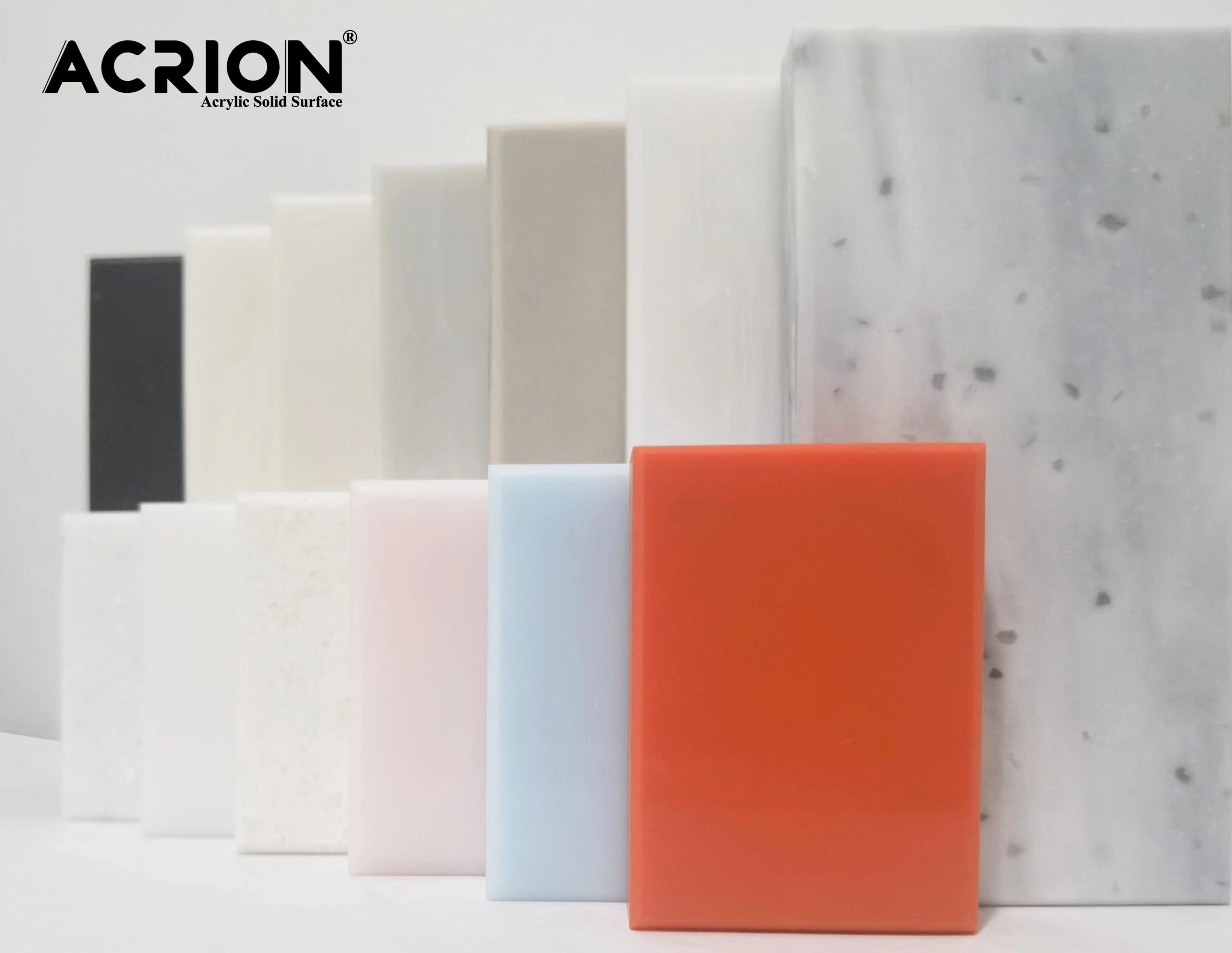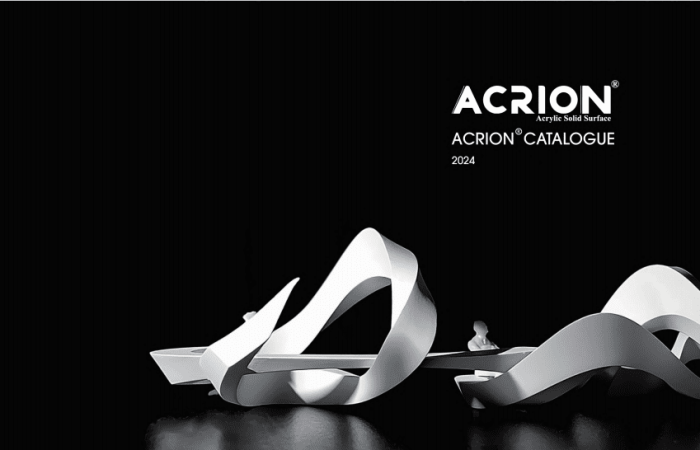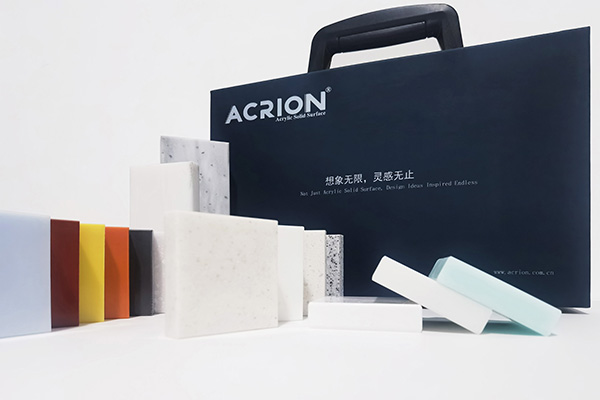Errores comunes para evitar en el mantenimiento de la encimera de Acrion
Las encimeras de Acrion son una opción popular para cocinas y baños debido a su durabilidad, apariencia perfecta y versatilidad. Sin embargo, el mantenimiento inadecuado puede conducir a un desgaste prematuro, decoloración o incluso daños irreversibles. Comprender las trampas comunes en el cuidado de la encimera Acrion es esencial para preservar su belleza y funcionalidad en los próximos años.
Malentendiendo la resistencia al calor
Exposición directa a altas temperaturas
Una de las ideas erróneas más frecuentes sobre las encimeras de Acrion es su capacidad para resistir el calor extremo sin protección. Si bien Acrion está resistente al calor hasta cierto punto, colocar ollas calientes, sartenes o electrodomésticos directamente en la superficie puede causar choque térmico, lo que provoca grietas, decoloración o deformación. Esto es especialmente cierto para los cambios repentinos de temperatura, como transferir una sartén caliente desde la estufa a una encimera fría.
Falta de medidas de protección
Muchos propietarios no usan trivets, almohadillas calientes o esteras aislantes debajo de artículos calientes, suponiendo que el material pueda manejar el calor. Con el tiempo, la exposición repetida a altas temperaturas debilita la superficie, lo que la hace más susceptible al daño. Incluso el contacto breve con objetos muy calientes puede dejar marcas permanentes o alterar la apariencia de la encimera.
Ignorar las pautas del fabricante
Los fabricantes a menudo proporcionan instrucciones específicas con respecto a los límites de exposición al calor para las encimeras de Acrion. Sin tener en cuenta estas recomendaciones, como colocar electrodomésticos calentados como ollas lentas o parrillas eléctricas directamente en la superficie, puede anular las garantías y acelerar el deterioro. Siempre consulte el manual de atención o consulte al instalador para obtener prácticas adecuadas de gestión del calor.
Uso de productos y métodos de limpieza incorrectos
Limpiadores químicos duros
Las encimeras de Acrion requieren soluciones de limpieza suaves para mantener su acabado. El uso de limpiadores abrasivos o ácidos, como limpiadores de horno, blanqueador o productos a base de amoníaco, puede grabar la superficie, eliminar los recubrimientos protectores o causar decoloración. Estos productos químicos también pueden reaccionar con el material, lo que lleva a la decoloración o una apariencia opaca y calcárea.
Herramientas de limpieza abrasivas
El acristalamiento de acero con lana de acero, almohadillas abrasivas o cepillos duros puede rayar la superficie, creando pequeñas ranuras donde pueden acumularse la suciedad y las bacterias. Con el tiempo, estos rasguños se vuelven más notables, disminuyendo el atractivo estético de la encimera. Incluso las esponjas de "no raspado" pueden contener partículas abrasivas que dañan el material si se usa agresivamente.
Técnicas de eliminación de manchas incorrectas
Cuando se trata de manchas obstinadas como tinta, tinte o óxido, algunos propietarios recurren a usar solventes como adelgazamiento de pintura, acetona o removedor de esmalte de uñas. Estas sustancias pueden disolver o decolorar la superficie de Acrion, causando daños irreversibles. Del mismo modo, raspando residuos pegajosos con herramientas afiladas como cuchillos o cuchillas de afeitar puede enojar el material, dejando marcas permanentes.
Descuidar el mantenimiento y la protección regulares
No abordar los derrames de inmediato
Acrion es no poroso, pero la exposición prolongada a líquidos como el vino, el café o los jugos de cítricos pueden filtrarse en imperfecciones microscópicas, causando manchas. Dejar que los derrames se sienten desatendidos permiten que el líquido penetre más profundo, lo que dificulta la eliminación y aumenta el riesgo de decoloración permanente. Esto es particularmente cierto para sustancias ácidas que pueden reaccionar químicamente con el material.
Con vistas a la necesidad de sellado o pulido
A diferencia de la piedra natural, Acrion no requiere sellado regular, pero su superficie puede perder su brillo con el tiempo debido a la abrasión o la exposición química. Algunos propietarios creen erróneamente que no se necesita mantenimiento más allá de la limpieza básica, lo que lleva a una apariencia aburrida y desgastada. El pulido periódico con un producto no abrasivo y seguro de Acrion puede restaurar el brillo y crear una barrera protectora contra el daño futuro.
Ignorando los factores ambientales
La exposición directa a la luz solar puede desvanecerse o encimeras amarillas de Acrion con el tiempo, especialmente en áreas cercanas a las ventanas o bajo tragaluces. No usar tratamientos de ventanas o películas protectores UV puede acelerar este proceso, lo que resulta en un color desigual o un aspecto desgarrado. Además, colocar objetos pesados en la encimera sin el soporte adecuado puede causar flacidez o grietas, particularmente en áreas con refuerzo de gabinete inadecuado.



